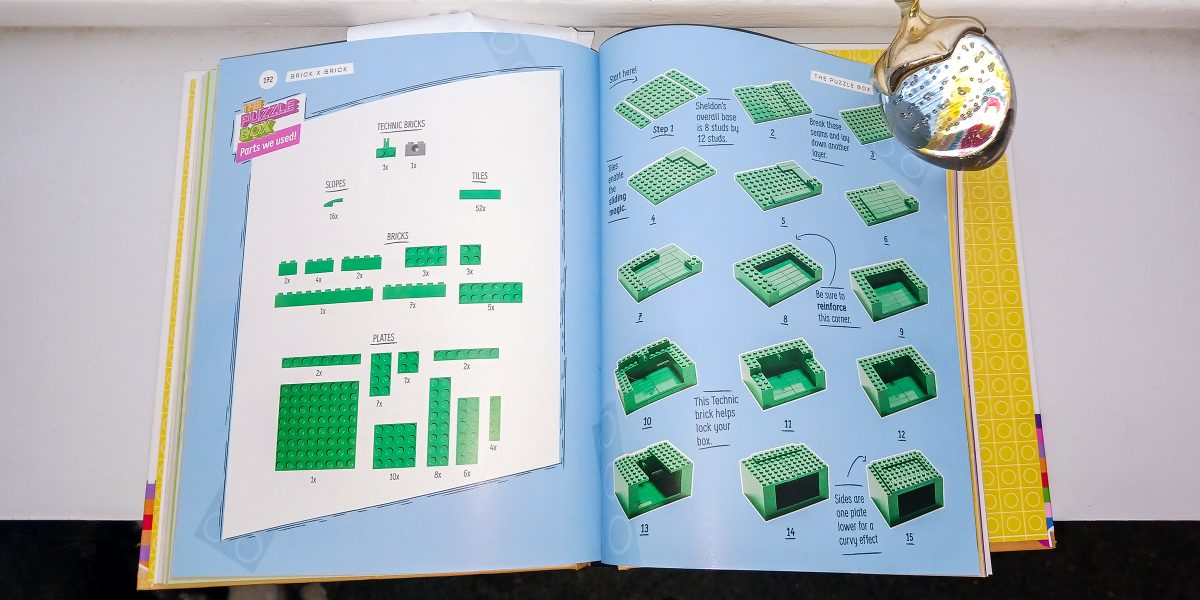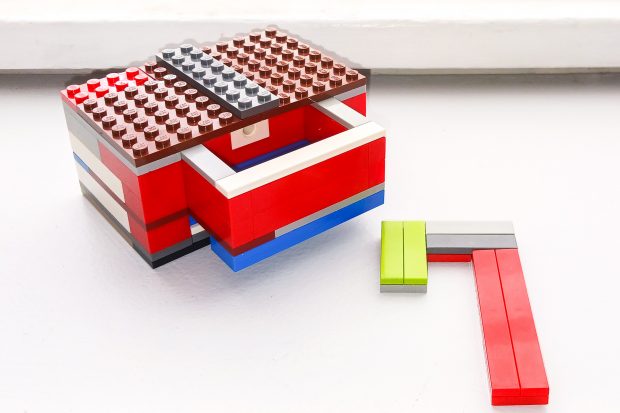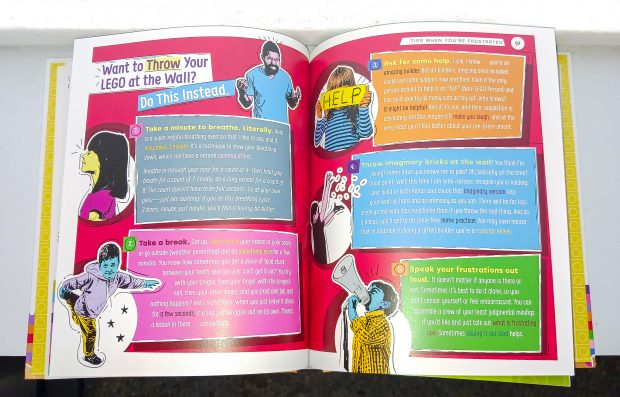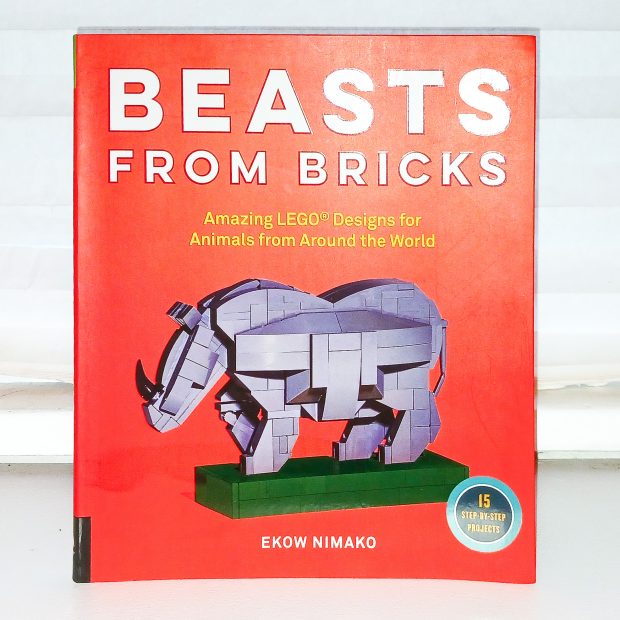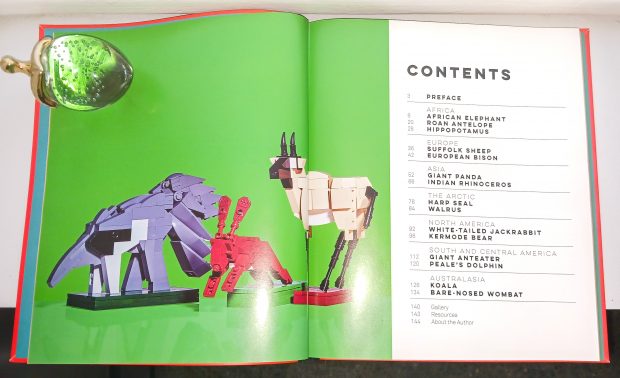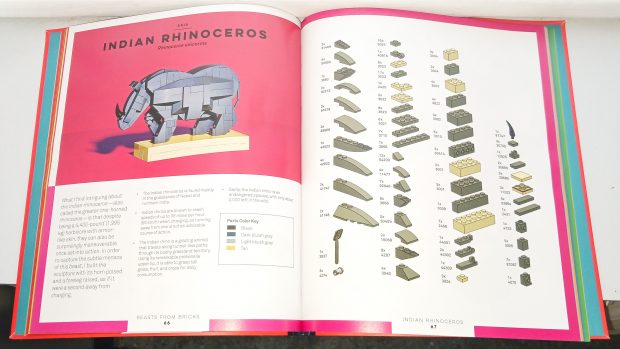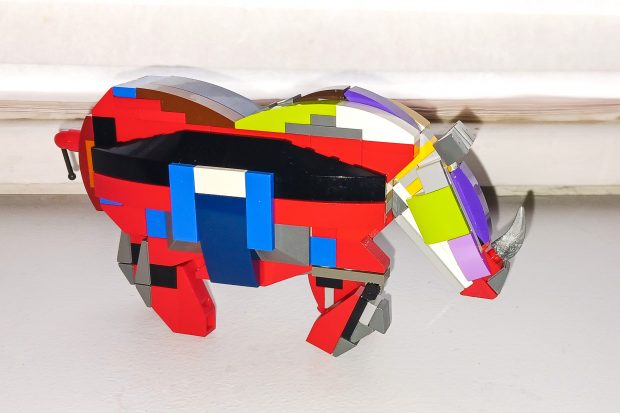Review: Books by Black LEGO Artists Ekow Nimako and Adam Ward
February is Black History Month — Let’s celebrate by learning about two books by talented Black LEGO Creators!
To celebrate Black History Month, we’re reviewing two books by prominent LEGO artists/creators of African descent:
- Brick x Brick: How to Build Amazing Things with 100-ish Bricks or Fewer by Adam Ward (2020)
$25 MSRP, 232 pages, Penguin Workshop. - Beasts from Bricks: Amazing LEGO® Designs for Animals from Around the World by Ekow Nimako (2017)
$25 MSRP, 144 pages, Quarry Books.
Both of the books are aimed at younger LEGO builders. Ward’s Brick x Brick is targeted for children ages 7-10 and contains instructions for “19 original and remixable builds,” as the cover boasts. Beasts from Bricks by Nimako contains instructions for 15 models of animals from Africa; Europe; Asia; the Arctic; North, South and Central America; and Australasia. The recommended age range for Beasts from Bricks readers is a bit higher, ages 8-14.
Let’s dig a little deeper into both of these books to highlight their unique approaches to the art and craft of LEGO education and model-building instruction.
Brick x Brick: a colorful combo of humor, memoir and information
The book is more than just a series of LEGO build instructions. It’s also a mini-memoir of Adam Ward’s childhood and his LEGO creator origin story, complete with Ward calling himself a superhero — just one example of the humorous tone the book is written in that speaks directly to the young people who are the target readers.
Yes, I just referred to myself as a superhero. This is my book, so I can totally do that. When you write your book, you can call yourself whatever you like, and I will high-five you, and absolutely call you that name, MC Señor Radical Ninja Master. Now, where was I?
Adam Ward, in Brick x Brick
Illustrated with photos of himself and his family when he was a child, Ward’s story starts with discovering a LEGO brick pile in another child’s bedroom when his mother and father were being shown a house for sale, which he jokingly credits for his parents’ eventual purchase of that home. Ward’s youthful fixation on the bricks led to him winning third place in a national LEGO building contest at eight years old, where he competed against college engineering students and adult hobbyists. However, disappointed at the cashless prize he received compared to the first-place $1,000 award, Ward didn’t enter any more contests and didn’t do any more LEGO building until he was an adult, when he built a shelf to keep his and his roommate’s Apple TV box from overheating and shutting down while they played video games.
From there, Ward started a business (with help of a crowdfunding campaign) using LEGO bricks to make practical household items from key fobs and picture frames to drink coasters and coffee tables. His business, Peace + Bricks, has grown to doing large commissioned works that have set world records, along with his work with LEGO Masters and LEGO Con.
With each build, Ward encourages readers to “remix” them by using their own colors, modifications and decorations. The builds range in size from “The Teeny Tinies,” four micro-models with fewer than 25 pieces each, to the 138-piece “Puzzle Box, Sheldon 1.0” (he named this specific puzzle box in an episode of “Brick x Brick”).
Sample Build: The Puzzle Box, Sheldon 1.0
I really like three-dimensional, brain-teaser-type puzzles, so the puzzle box was an easy choice for a model I would want to build. Also, I figured the puzzle box would be the hardest model, even though by Adam Ward’s own rating the difficulty level of assembling this build is three out of five bricks. As built in the book, the model is on the higher end of his “100-ish bricks or fewer” range of bricks-per-build count, which for me is a better indicator of difficulty. Plus, 3-D puzzles tend to be complex to assemble as well as solve, from my experience.
When I build LEGO models, I stick to the limits of my personal stash of bricks, mostly made up of thrift store, yard sale and flea market purchases. I will only buy more bricks if a specific LEGO piece is absolutely needed for the model’s form and/or function, and for economic and ecological reasons I tend to buy pre-owned bricks from eBay.
I also focus on the pieces I need to make the model look how it’s supposed to look and/or function how it’s supposed to, so I don’t care about what color the bricks are. In addition, when I study a LEGO model’s instructions, oftentimes I will swap out the specific pieces listed for other pieces in my stash that will do the job just as well, saving me from having to buy more bricks.
For example, the instructions for the key to the puzzle box call for one 2×6 plate, two 2 x 4 plates and one 2×2 plate. Those plates are supposed to be linked together to make a key with eight 1×4 tiles. To better accommodate my stash’s needs and create, in my opinion, a more stable key, I used one 2×10 plate, one 2×4 plate, and one 2×2 plate and covered them with two 1×8 tiles and four 1×4 tiles. The key has the same shape, and it functions as it should with the box.
The instructions for the puzzle box and key are made up of photos; there is no text except for some tips such as, “Tiles enable the sliding magic.” The bricks in the model are all one color, making it very hard to see which bricks or plates are to be used. I had to squint or even just guess at some points whether the instruction photo called for a 2×4 brick or a 2×6 one, for example. At some points, I simply looked at the photos at a specific step, thought to myself, “Okay, it’s supposed to look like this; now how do I make it look like that?” and then used whatever bricks I had to make my build look like the model in the book.
Additionally, because the important part of the puzzle box is for it to function, I left off a lot of the fancy tiles the instructions called for covering the top of the build. Besides, I don’t have many 1×2 curved slope bricks, so if I don’t have to use them to make the model look and function as a puzzle box I can save them for a model that really needs them.
In the end, I have a puzzle box, and it works! (And no, I’m not going to tell you the secret of how it works.) It was a difficult build for me, however. It’s understandable that bricks of a single hue work to hide the secret of the box, but the photo instructions need to have different colors of bricks for each pictured step so builders can see for sure which brick, plate or tile is needed.
Most of the models in Brick x Brick have mixed colors of bricks and so don’t have this problem, but for a complex build like the puzzle box, a little mixing of colors would have gone a long way to making it easier. It was hard for me as an adult; even a bright kid might get frustrated with this model. It’s a good thing Ward has a section in his book called “Want to Throw Your LEGO at the Wall? Do This Instead.” that lists things builders can do when they’re frustrated by working on a LEGO Model.
Beasts from Bricks: A fine artist’s approach to LEGO model making
On the LEGO website, you will find a page called Celebrate Black Creators. Heavily featured on this page is the Ghanaian-Canadian artist Ekow Nimako, whose 100,000-piece LEGO cityscape “Building Black: Civilizations” was featured on Brick Architect in 2021.
Nimako’s book Beasts from Bricks starts with a preface about his childhood dream to work at a “mythical LEGO headquarters… equivalent to…Dorothy’s…Emerald City of Oz,” his artwork with LEGO decades later, and his reasons for creating a series of handheld-size animal models:
What I love about using LEGO … is the unique challenge of capturing the natural forms of the beings and animals I create … [It] is really when I create simple and small that my job becomes that much more complex. The sculptures in this book took me several hours each to design, some several days, and because there are so few parts to work with on such a small scale, expressing the subtleties of these beautiful beasts requires a keen attention to detail, and a masterful approach to sculpture.
Ekow Nimako, in Beasts from Bricks
Speaking of sculpture, the last few pages of Beasts from Bricks have a gallery section with photographs of some of Nimako’s large LEGO animal artworks, including the 50,000-piece “Silent Knight,” a white barn owl over 13 feet (four meters) tall.
The rest of the book contains the animal builds and instructions, introduced with a photograph of the completed model, a short paragraph about why Nimako likes and/or chose the animal, and a little bullet-point list of facts about the creature. For example, about the giant anteater model, Nimako writes, “[It] has one of the most interesting shapes of any animal I’ve ever seen, so I felt it was absolutely necessary that I challenge myself to build one.” One bullet-pointed fact about the animal is “Despite having no teeth, giant anteaters typically consume tens of thousands of ants and termites each day.”
Easy-to-read graphic illustrations are used for the parts lists and build instructions in a manner similar to the manuals for official LEGO sets. Each pictured piece in every list is accompanied by the LEGO part number so you can easily look it up if you’re not sure about what piece it is.
Sample Build: Indian Rhinoceros
After looking at the models in Beasts from Bricks, I chose to build the one that graces the cover of Ekow Nimako’s book, the Indian rhinoceros that, according to the author, “despite being a 4,400-pound (1,995 kg) herbivore with armor-like skin, they can also be surprisingly maneuverable once set into action.”
The model’s shape is very distinctive, so I figured I could build it using any color of LEGO pieces as long as the shape was accurate, saving me from having to buy a ton of Dark Bluish Gray and Light Bluish Gray LEGO bricks and freeing me to purchase only a handful of pre-owned pieces in shapes I did not already have in my stash. Additionally, the model looked as if it could stand on its own without the base that’s part of the build. Generally, I don’t like to waste a bunch of bricks on bases unless they’re necessary for the model to stand.
With each step depicted with one illustration of the pieces you need in a bordered box and another of how those pieces fit together, this complex build was mostly very easy to do. There were only one or two steps where I had to study the illustrations and figure out what was going on. My work process was: 1) pull out the pieces shown in the bordered picture, and 2) put them together as shown in the un-bordered picture. This made for a long and pleasurable build with just the right amount of challenge and surprise in the process.
I especially loved the building-upside-down steps with inverted slope bricks. I have an overabundance of red and blue inverted and regular slopes in my stash for some reason, so I’m glad to find a use for them. There’s a lot of unique and fun pieces and building techniques in making this rhinoceros, including lots of rounded slopes, some hinge connecter plates and a possibly “illegal” use of little LEGO Technic pins inserted into inverted bricks.
In the end, my multicolor model is a recognizable rhinoceros, and it’s a fairly stable model without a base, though it’s definitely a build for posing and not for playing with. The only modification I made from the original model beside not building a base is using a 1×1 cylinder brick and a lever piece (Lego part number 298) for the rhino’s tail because I didn’t want to buy the mini-figure shovel piece (part number 3837) that Nimako chose for that part of the model’s anatomy.
As for the build’s appropriateness for young people, the younger end of the 8-to-14-year-old range will need some help from an adult, but the tweeners and young teens can likely build the rhinoceros by themselves with no help. Thanks to the book’s great instructions and illustrations, young builders and old will be entertained and not frustrated. Plus, they’ll end up with a LEGO model that they will be proud of, as I am of my rainbow rhino.
Closing thoughts
Both Ekow Nimako’s and Adam Ward’s books are must-haves for small-scale LEGO model building hobbyists of any age and would make essential additions to a LEGO-based library. Beasts from Bricks and Brick x Brick are the second and third LEGO books I have ever bought, the first being the ebook edition of The Lego Architect, of course!
My opinions about these books aren’t even considering that they’re both by authors of African descent; however, I do consider it important to support what’s likely the only LEGO-subject books written by Black authors (if there are any others, write to the Brick Architect with the information and we’ll buy and review it). Black LEGO artists, creator and builders are a small but growing minority who are working hard to earn public attention and support. The more visibility they get, the more children of African descent will see them and form a lifelong love for the bricks that will make their minds and imaginations grow. Furthermore, children of all races and ethnicities will see that people from all walks of life love to work and play with LEGO.



